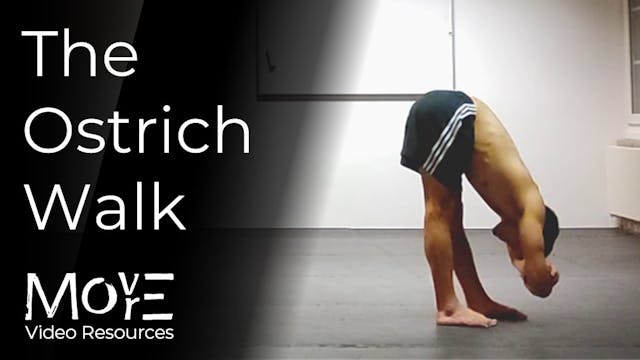The Inch Worm
'Bipedal' locomotion: foundational patterns & conditioning
•
2m 43s
THE WHAT:
A conditioning locomotion pattern innately developing the range of the ankles in dorsiflexion (this comes from the intention working through a maximal extension & flexion each step which both loads in a stretched position, as well as strengthens through the concentric range), front-folding range (ever-increasing during the “walk-in” phase of the movement whilst maintaining KNEE-LOCKOUT and stepping as close to the hands as possible) & 'compression' (the act of actively “pulling” the upper & lower-halves of the body closer together.
LEARN MORE (subscriber-only):
https://drive.google.com/file/d/1ZQHvHy-Qy_GivFflQVtehFDBAsjMxAdJ/view?usp=drive_link
_____________________
For programming, guidance, & support for your physical practice:
FREE fundamental prehabilitation program: https://www.movemoremp.com/
Online Support (1 to 1 coaching): https://movemoremp.com/onlinesupport/
Elements (standardised programs): https://www.movemoremp.com/elements
[email protected]
Up Next in 'Bipedal' locomotion: foundational patterns & conditioning
-
The 'Ostrich Walk'
THE WHAT & HOW:
A dynamic, ballistic locomotion pattern which develops the elasticity of the posterior-chain, further to range in front-folding & active compression (when executed with this intent, i.e. active PULLING of the top of the head toward the floor).Practitioners should be mindful - wh...
-
The Duck Walk
THE WHAT:
A progressively-extending locomotion context developing mobility, joint-integrity, and patterning of the general squat form in motion. In its most basic intent, the practice is of placing ever further-reaching bases of support (the foot), and then TRANSFERRING the weight of the body – “... -
Travelling 'squat-bounce'
THE WHAT:
A simple & accessible squat context which expresses & develops the elasticity of the lower-body articulations and their intrinsic connection to the upper-body. As it travels through space it is fundamentally a LOCOMOTION-conditioning context, although, as a pattern in and of itself, it ...



